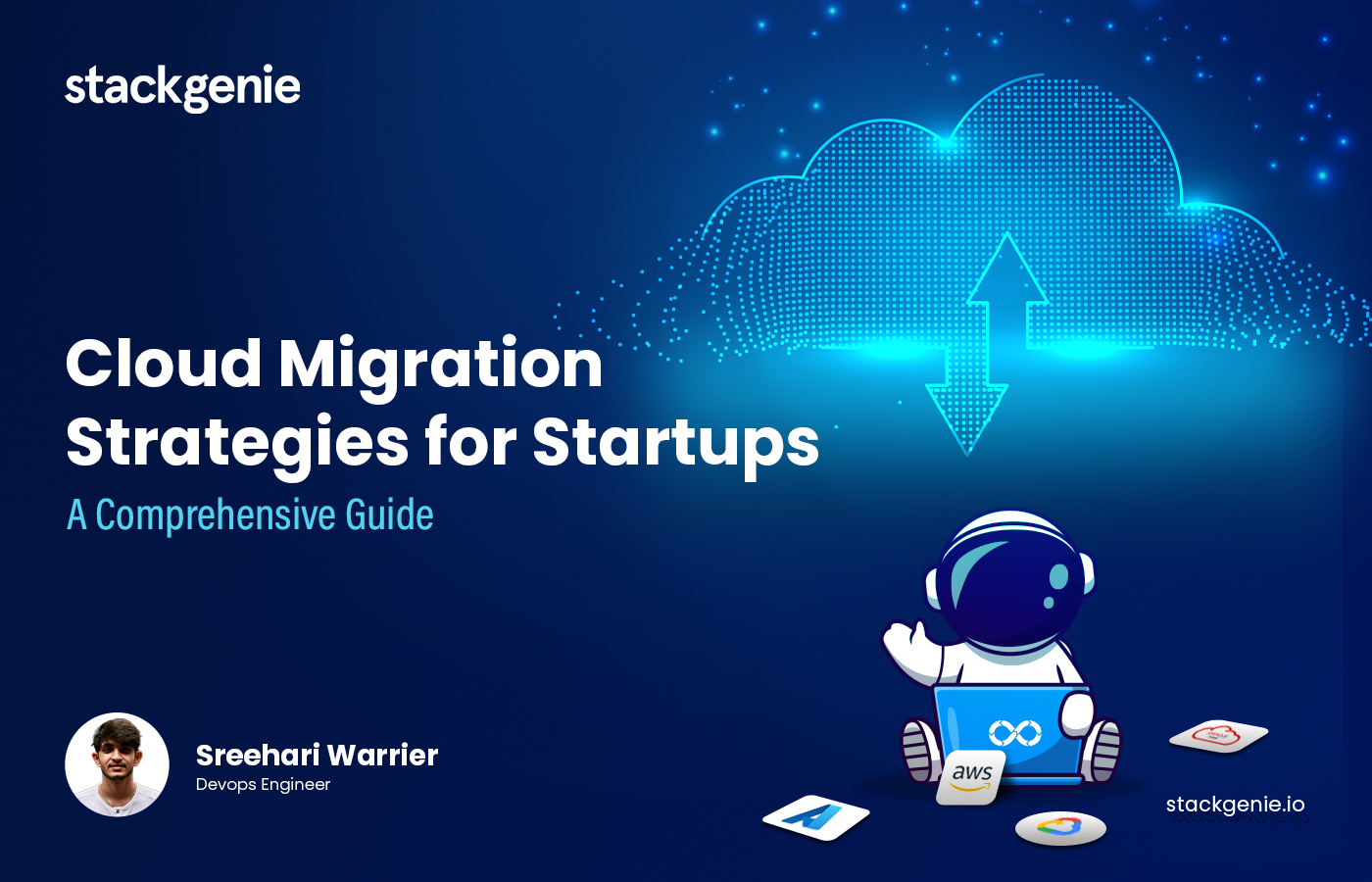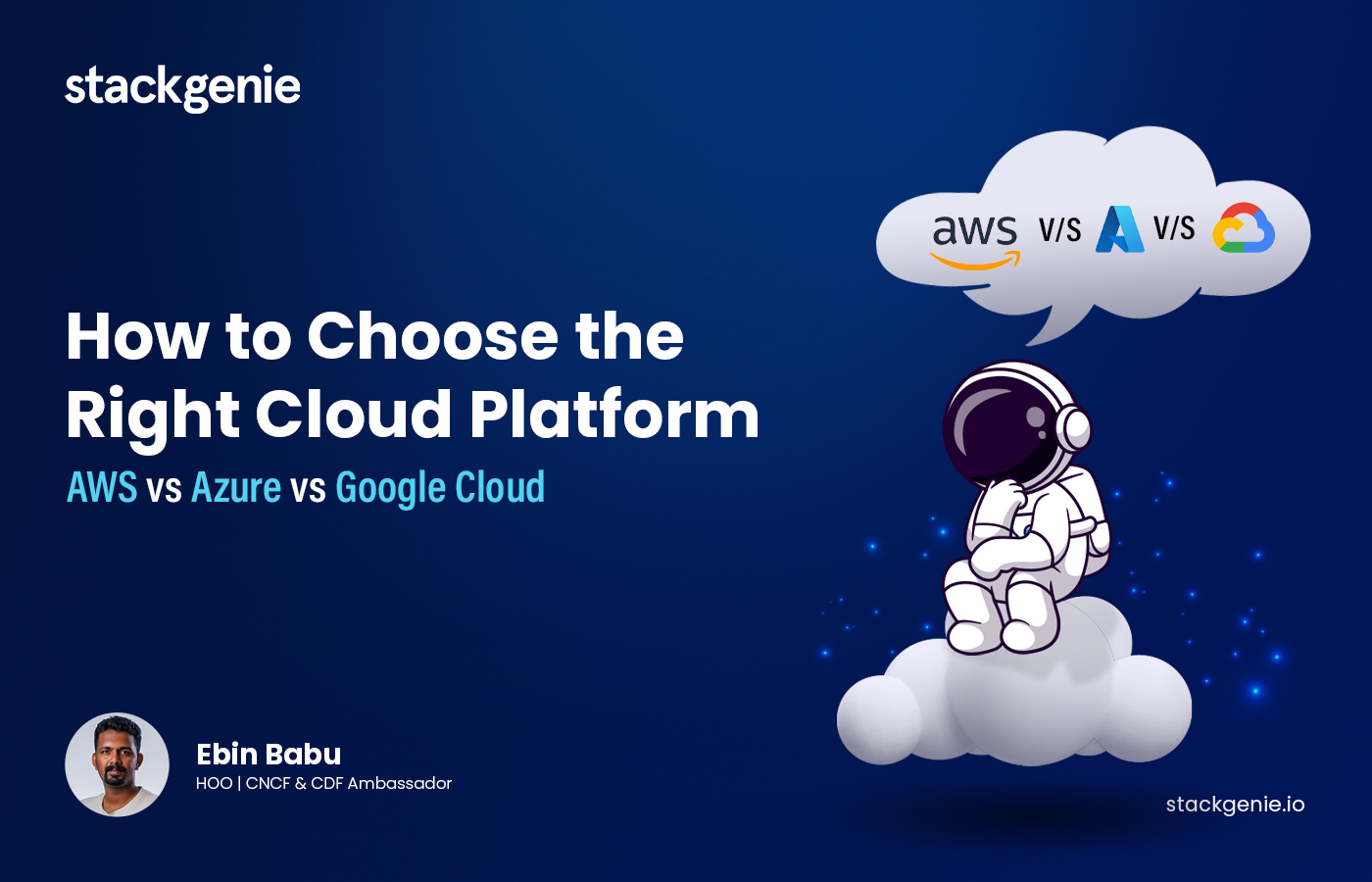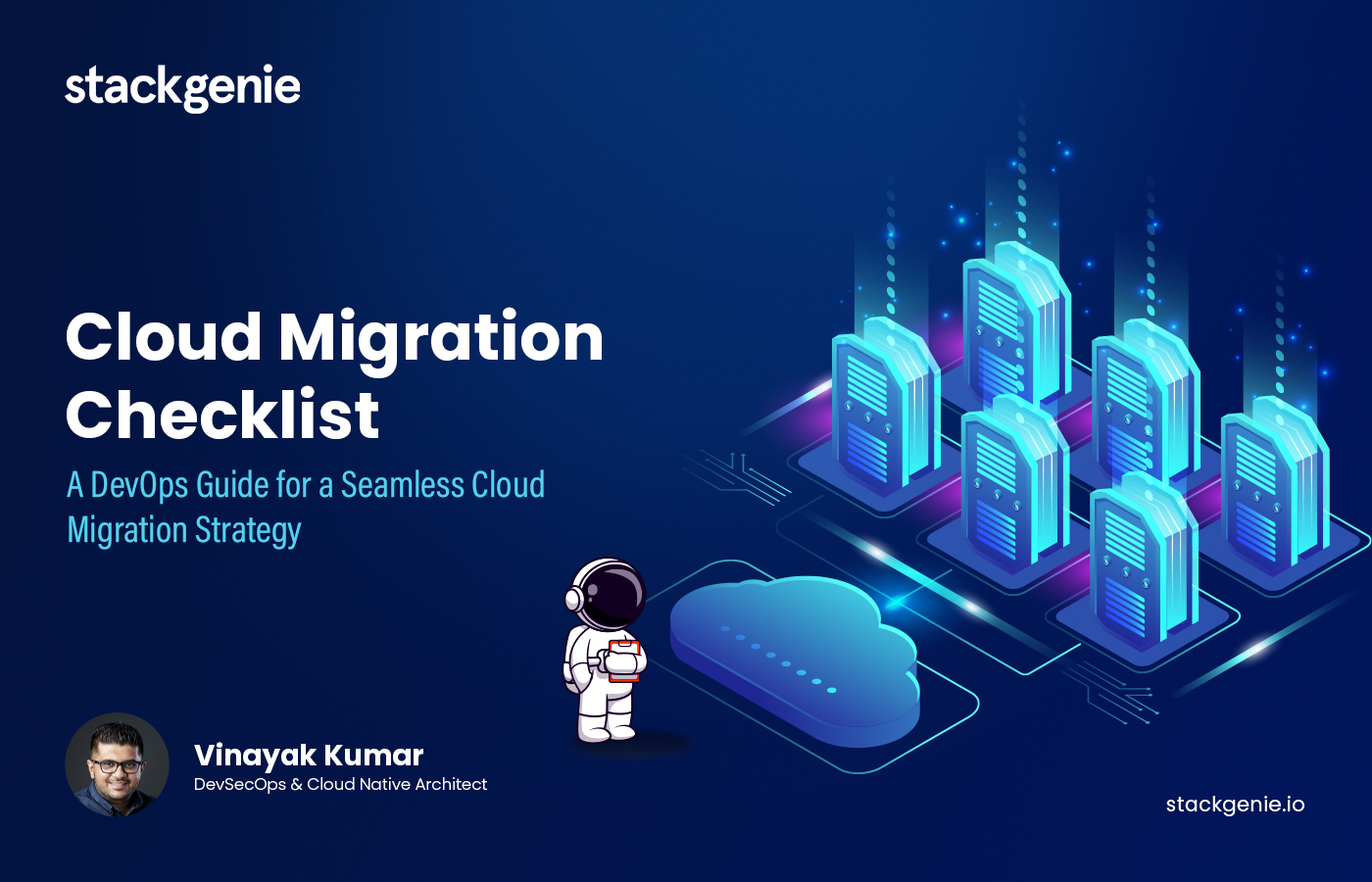Modern startups require robust technology infrastructure that delivers rapid scalability, maximum flexibility, and cost-efficient operations without draining precious funding resources. Cloud migration offers these growing companies the agility, scalability, and advanced capabilities needed to compete effectively. This guide explores the essential steps, best practices, and strategies for successful cloud migration tailored specifically for startup needs.
Why Cloud Migration is Essential for Startup Success
The cloud isn’t just another IT trend—it’s a fundamental business enabler for startups looking to grow rapidly with limited resources:
- Accelerated Speed to Market: Deploy features, environments, and entire applications in minutes rather than weeks or months
- Cost-Effective Scalability: Pay only for what you use and scale resources up or down instantly based on demand
- Access to Enterprise-Grade Technology: Leverage AI, machine learning, and big data analytics without massive upfront investments
- Reduced Operational Overhead: Eliminate time-consuming server maintenance and focus on core business innovation
- Enhanced Team Collaboration: Support distributed teams with seamless access to shared resources and tools
Building Your Startup’s Cloud Migration Strategy: 10 Essential Steps
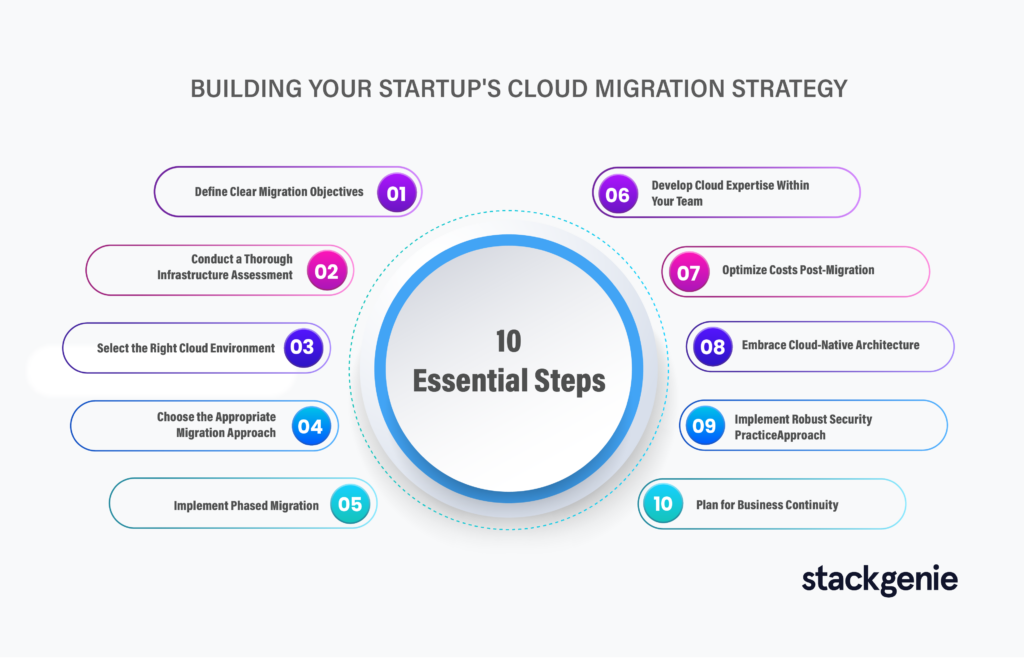
- Define Clear Migration Objectives
Before writing a single line of code or moving any systems, establish what success looks like for your startup’s cloud journey:
- Specific cost reduction targets
- Performance improvement metrics
- Scalability requirements
- Compliance or security standards
- DevOps efficiency goals
Each objective should be measurable with defined KPIs that align with your broader business strategy.
- Conduct a Thorough Infrastructure Assessment
Understanding your current technology landscape is crucial before planning your migration path:
- Document all applications, their dependencies, and integration points
- Identify technical debt and performance bottlenecks
- Assess the architecture style (monolithic vs. microservices)
- Map data flows and security requirements
- Evaluate licensing constraints and compliance needs
This assessment creates a prioritized migration roadmap that minimizes risk and maximizes business continuity.
- Select the Right Cloud Environment
Different cloud models offer varying benefits for startups at different stages:
Public Cloud Platforms:
- AWS: Extensive service portfolio with strong startup programs
- Google Cloud Platform: Advanced AI/ML capabilities and generous startup credits
- Microsoft Azure: Seamless integration with Microsoft tools and strong enterprise security
Private Cloud Options:
- Higher security and compliance capabilities
- Greater control over data sovereignty
- Potential cost advantages for specific workloads
Hybrid/Multi-Cloud Approaches:
- Reduced vendor lock-in risks
- Best-of-breed service selection
- Enhanced disaster recovery options
Your choice should align with your technical requirements, future growth plans, and budget constraints.
- Choose the Appropriate Migration Approach
Different workloads require different migration strategies:
Rehost (“Lift and Shift”):
- Move applications as-is to the cloud
- Fastest implementation with minimal changes
- Ideal for legacy systems with low complexity
Replatform (“Lift, Tinker and Shift”):
- Make selective optimizations during migration
- Leverage managed services for databases or message queues
- Balance between speed and cloud-native benefits
Refactor/Rearchitect:
- Completely redesign applications for cloud-native environments
- Break monoliths into microservices
- Maximize cloud benefits but requires more time and resources
Replace:
- Discontinue legacy applications in favor of SaaS alternatives
- Often the most cost-effective for outdated systems
- Minimal migration effort but potential business process changes
- Implement Phased Migration
Successful cloud migration isn’t an all-or-nothing proposition:
- Start with Non-Critical Workloads: Development environments, internal tools, or testing platforms make excellent candidates for initial migration
- Prove the Concept: Gather metrics and validate your approach before tackling mission-critical systems
- Establish Patterns: Create reusable migration patterns to accelerate subsequent phases
- Migrate Core Systems: Move production workloads with comprehensive testing and fallback plans
- Decommission Legacy Infrastructure: Eliminate redundant systems to realize cost savings
This approach minimizes business disruption while building team confidence and expertise.
- Develop Cloud Expertise Within Your Team
Technology transformation requires people transformation:
- Invest in cloud certification programs (AWS, Azure, GCP)
- Foster a DevOps culture that breaks down silos
- Implement infrastructure-as-code practices from day one
- Create internal knowledge sharing programs
- Consider managed service providers to augment your team’s capabilities
Cloud-savvy teams accelerate innovation and reduce operational friction.
- Optimize Costs Post-Migration
Cloud spending can spiral without proper governance:
- Implement auto-scaling to match resource allocation with actual demand
- Utilize reserved instances for predictable workloads
- Leverage spot instances for non-critical, interruptible tasks
- Deploy comprehensive resource tagging for accurate cost allocation
- Schedule regular cost reviews and optimization sprints
Most startups can reduce cloud costs by 20-30% through disciplined monitoring and optimization.
- Embrace Cloud-Native Architecture
As your startup matures in the cloud, evolve toward more native approaches:
- Adopt containerization with Docker and orchestration with Kubernetes
- Implement serverless functions for event-driven workloads
- Design with microservices for independent scaling and deployment
- Leverage managed services instead of custom implementations
- Build event-driven architectures for better scalability
Cloud-native designs improve agility, reduce operational overhead, and enable faster feature delivery.
- Implement Robust Security Practices
Security is a shared responsibility in the cloud:
- Follow the principle of least privilege for all access controls
- Enable multi-factor authentication for all accounts
- Encrypt data both in transit and at rest
- Implement comprehensive logging and monitoring
- Conduct regular security assessments and penetration testing
- Deploy automated compliance checks and guardrails
A security-first approach prevents costly breaches and builds customer trust.
- Plan for Business Continuity
Cloud environments need resilience strategies:
- Deploy across multiple availability zones or regions
- Implement automated backup and recovery procedures
- Test disaster recovery scenarios regularly
- Monitor application performance and availability
- Establish clear incident response protocols
Resilient cloud architectures minimize downtime and protect your startup’s reputation.
Essential Cloud Tools for Startups
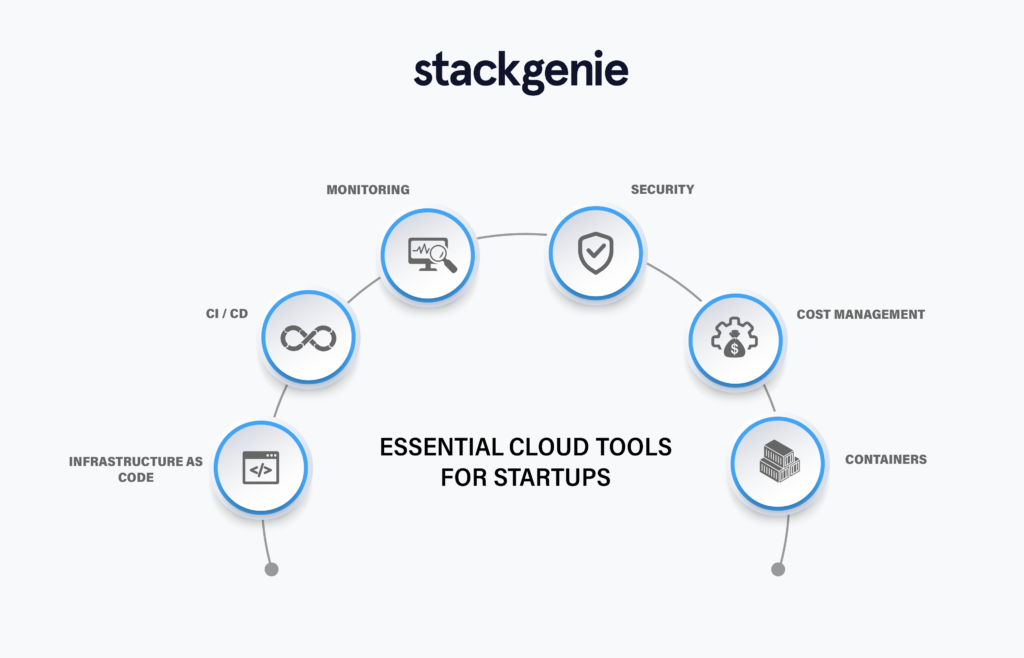
Building an effective cloud environment requires the right toolset:
| Category | Recommended Tools | Benefits |
| Infrastructure as Code | Terraform, AWS CloudFormation, Pulumi | Consistent, repeatable deployments |
| CI/CD | GitHub Actions, GitLab CI, Jenkins | Automated testing and deployment |
| Monitoring | Datadog, New Relic, Prometheus + Grafana | Real-time insights and alerts |
| Security | AWS Security Hub, Prisma Cloud, Snyk | Vulnerability management and compliance |
| Cost Management | CloudHealth, AWS Cost Explorer, Kubecost | Spending visibility and optimization |
| Containers | Docker, Kubernetes, AWS ECS | Consistent application packaging and deployment |
Measuring Cloud Migration Success
Track these key metrics to evaluate your migration effectiveness:
- Performance: Page load times, API response times, transaction speeds
- Availability: Uptime percentage, mean time between failures
- Cost Efficiency: Infrastructure spend per customer/transaction
- Developer Productivity: Deployment frequency, lead time for changes
- Business Agility: Time-to-market for new features
Conclusion: Cloud Migration as a Competitive Advantage
For startups, cloud migration isn’t just an IT project—it’s a strategic business initiative that creates competitive advantage. By following these best practices and implementing a thoughtful migration strategy, startups can build flexible, scalable infrastructure that supports rapid innovation and sustainable growth.
The most successful startup cloud migrations focus not just on the technology transition but on the business outcomes: faster time-to-market, improved customer experiences, reduced operational costs, and enhanced ability to pivot when market conditions change.
Whether you’re a pre-seed startup building your MVP or a Series A company scaling for growth, the right cloud migration approach creates the foundation for your next stage of success.
Need help planning your startup’s cloud migration? Contact our team of cloud experts for a free consultation and discover how we can help you build a cloud strategy tailored to your unique business needs.
